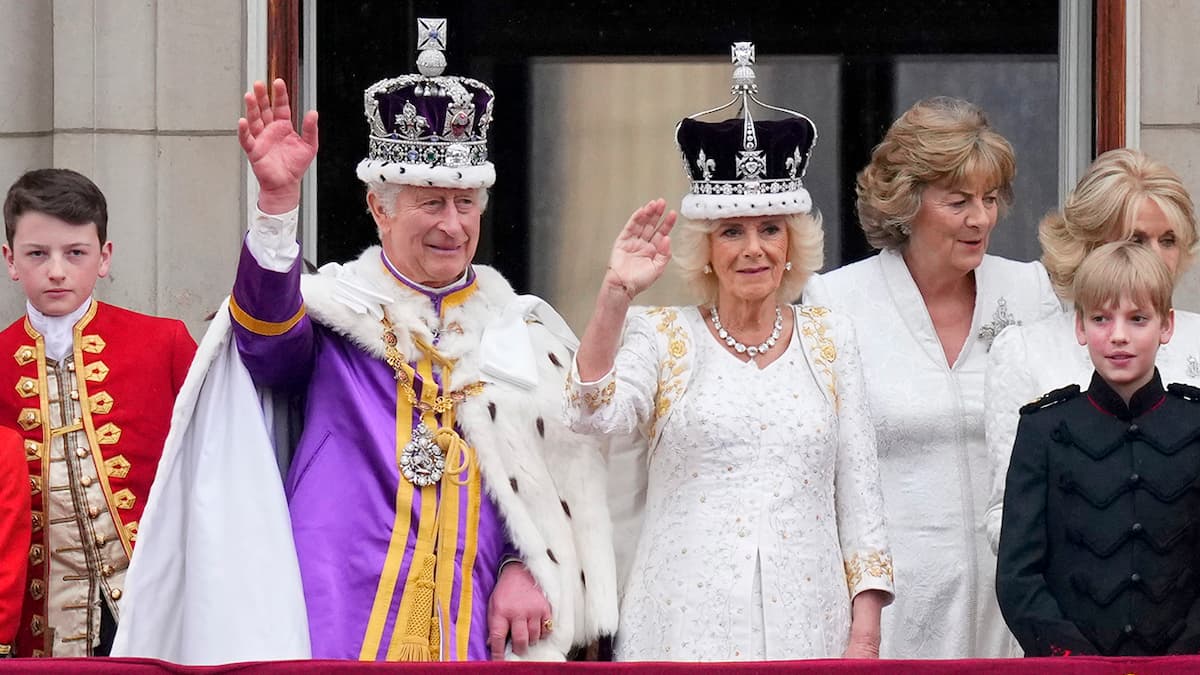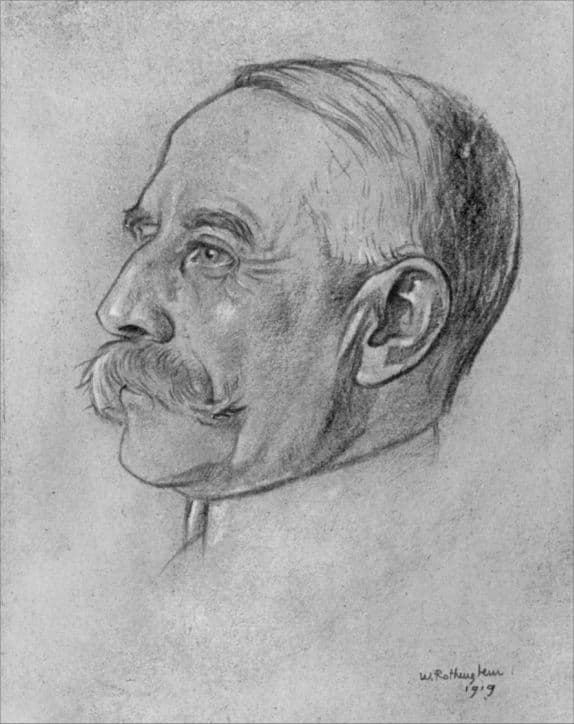Like countless people around the world, I recently settled in to watch at least part of the coronation of Charles III and Queen Camilla. This ceremony has great tradition and theatricality, from the arrival of the golden carriage to the religious ceremony at Westminster, and the waving from the balcony. It was certainly fitting for this grandeur ceremony to showcase the splendor the House of Windsor had to offer. In the English-speaking world, these ceremonies are known as “Pomp and Circumstance,” although there is a slightly different meaning to that term in the United Kingdom and the United States. At any rate, the expression originated in Shakespeare’s Othello and reads:

King Charles and Queen Camilla
Farewell the neighing steed and the shrill trump,
The spirit-stirring drum, th’ear-piercing fife,
The royal banner, and all quality,
Pride, pomp, and circumstance of glorious war!
To music lovers, the expression “Pomp and Circumstance” is probably best known as a series of marches for orchestra composed by Sir Edward Elgar (1857-1934), so let’s have a listen.
Edward Elgar: Pomp and Circumstance March No. 4 in G Major
This particular march should sound very familiar because we very recently heard it. It was performed as the recessional—music that’s sung or played while the clergy and choir process out of church at the end of a service—in King Charles III’s 2023 coronation. And if you have a longer memory, you also heard it performed at the wedding of Charles, Prince of Wales, and Lady Diana Spencer. “As Diana’s veil was lifted and the couple bowed and curtsied to Queen Elizabeth II, the opening notes sounded and continued as they walked down the aisle of St Paul’s Cathedral out to the portico and the waiting crowds.”

Portrait of Edward Elgar by Rothenstein, 1919
Elgar completed his No. 4 march on 7 June 1907 and dedicated the composition to his friend, the cathedral organist Dr. G. Robertson Sinclair. It certainly is a rousing and ceremonial composition, which was used as the basis of a patriotic poem by A. P. Herbert with the refrain “All men must be free.”
Edward Elgar: Pomp and Circumstance March No. 1 in D Major
March No. 1 is certainly the best-known of the six marches. Composed during the interval between King Edward VII’s accession to the throne and his coronation, it was completed on 23 August 1901. First performed on 19 October by the Liverpool Orchestral Society, Elgar was immensely proud that his “military marche evoked an enthusiastic response from an immense sector of English society, from the Sovereign to the humblest music lover of the land.” For the first two marches of his “Pomp and Circumstance” series, Elgar took as his motto the following lines from Lord de Tabley’s poem, “The March of Glory.”
Like a proud music that draws men on to die
Madly upon the spears in martial ecstasy,
A measure that sets heaven in all their veins
And iron in their hands.
I hear the Nation march.
Beneath her ensign as an eagle’s wings;
O’er shield and sheeted targe
The banner of my faith most gaily swing;
Moving to victory with solemn noise,
With worship and with conquest and the voice of myriads.
Edward Elgar: Pomp and Circumstance March No. 2 in A minor (Sydney Symphony Orchestra; Vladimir Ashkenazy, cond.)
As a composer, Elgar was never really all that concerned with the line drawn between serious and popular music. As he once said, “I look on the composer’s vocation as the old troubadours or bards did. In those days it was no disgrace for a man to be turned on to step in front of an army and inspire them with song. For my part, I know that there are a lot of people who like to celebrate events with music. To these people, I have given tunes. Is that wrong?” Elgar also questioned why the “ordinary quick march should not be treated on a large scale in the way that the waltz, the old-fashioned slow march, and even the polka have been treated by the great composers.”

Edward Elgar’s signed Pomp and Circumstance score cover
As such, following the model of Strauss waltzes, Elgar’s symphonic marches “contain subtleties and sophistication that make them masterpiece of their kind. Yet anyone can march to them.” All the marches share the same fundamental structure of march-trio-march-coda, and Elgar’s decisive rhythms in his thrilling beginnings, “build anticipation for the broad central tunes that stir the soul.” The first 2 marches were composed in 1901, and Elgar reports, “I’ve got a tune that will knock’em—knock’em flat.” The rousing first march had to be encored a number of times, and March No. 2 is a gracious and lyrical composition with “uneasy undertones.” The first march gives us that one-in-a-lifetime tune, “while the second highlights Elgar’s instinct for orchestral sound and imaginative colours.”
Edward Elgar: Pomp and Circumstance March No. 3 in C minor (Hallé Orchestra; Mark Elder, cond.)
Elgar published the first four “Pomp and Circumstance Military Marches” between 1901 and 1907. March No. 3 is dedicated to Sir Ivor Algernon Atkins, the choirmaster and organist at Worcester Cathedral. It has been described as “full of anxiety and suppressed emotion.” To be sure, it differs greatly from the others in its opening mood. Deliberately solemn, the quick march is led by low clarinets, three bassoons and the horns. The darker tone colors and the minor tonality prepare the path for a rather hopeful sounding cantabile theme. Elgar wrote to a rich patron on 13 February 1905, “The new Pomp & C is a devil & the string thing most brilliant with a real tune in it, however.” It first sounded on 28 March 1905 at the Queen’s Hall played by the London Symphony Orchestra. Alice Elgar wrote to a friend, “The new march is thrilling, the most pacific friends were ready to fight!” And while this march is probably the least known of the set, Elgar considered it “as the most successful of the marches in terms of composition technique and musical content.” Boosey published it in 1905, and Elgar received 50 pounds in royalty on every arrangement sold.
Edward Elgar: Military March No. 5 in C Major, Op. 39, “Pomp and Circumstance” (London Symphony Orchestra; Edward Elgar, cond.)
The Pomp and Circumstance March No. 5 dates from 1930, but it was almost certainly sketched much earlier. Dedicated to the organist and composer Dr. Percy C. Hull, it first sounded on 20 September 1930 in a Queen’s Hall concert conducted by Sir Henry Wood. Elgar himself had produced a recording two days earlier in the Kingsway Hall, London, despite being in poor health. As a scholar writes, “It is perhaps the only work Elgar wrote after the First World War that recaptures the splendor and orchestral opulence of the earlier orchestral work. The time signature imparts to the march a rhythmic swagger that never falters, although again the Trio theme adds a typical Elgarian tinge of mellow nostalgia to this glittering score.” The premier performance was rapturously received, with the Daily Telegraph reporting, “No recent announcement can have given greater pleasure to a vast number of people than the promise of a new Military March by the Master of the King’s Music.”

Elgar’s Pomp and Circumstance
Elgar had always intended to write a set of six Pomp and Circumstance marches, and he produced a number of sketches. Sadly, Elgar was unable to complete the composition; however, Boosey published a “March No. 6” in 1956 arranged and orchestrated by Percy M. Young.
In 2005, a number of sketches for a sixth Pomp and Circumstance march were sent to the English composer Anthony Payne. As he explains, “after an initially casual inspection I took a second look and suddenly found ideas falling into place. My interest had become fully and fascinatingly engaged. The quick-march theme in 2/4, found among the more recently discovered sketches, needed filling out texturally but could launch the main section, while a restlessly ambivalent theme in 6/8 from the British Library sketches would follow naturally on from it. The latter proved very hard to decipher and needed extending, but its highly characteristic mix of energy and wistfulness lasted for some 50 bars, helping me to give the march a unique character. Nowhere else in the Pomp and Circumstance marches does Elgar combine compound and duple metres in this way.”
Payne’s version premiered on 2 August 2006 with Andrew Davis conducting the BBC Symphony Orchestra at The Proms. I do wish King Charles a long and peaceful reign, but I am already curious which March of Pomp and Circumstance will be selected for King Williams’ coronation?
For more of the best in classical music, sign up to our E-Newsletter
Edward Elgar: Pomp and Circumstance No. 6 in G minor (completed Anthony Payne) (Sapporo Symphony Orchestra; Tadaaki Otaka, cond.)




